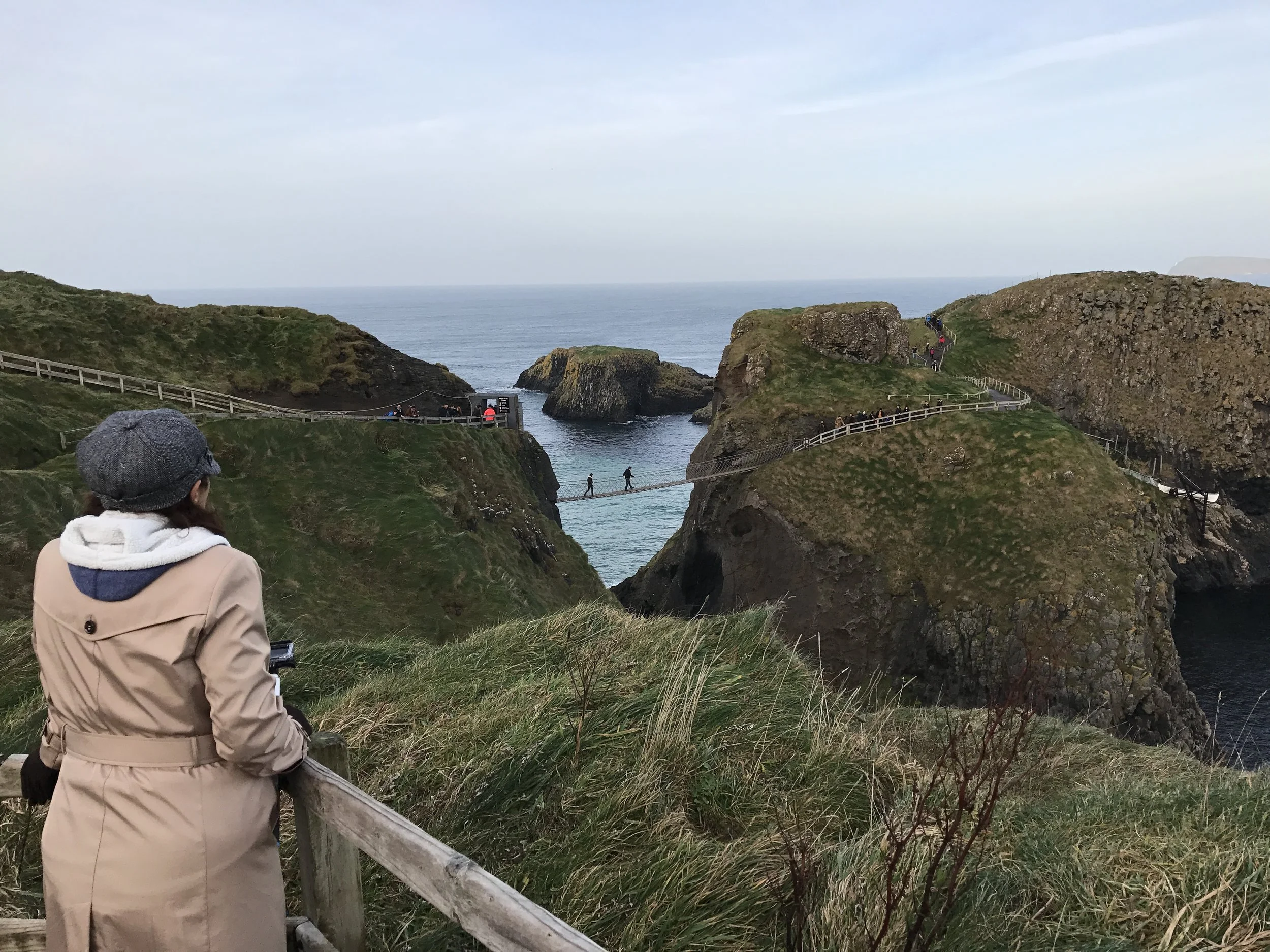Throughout all of Ireland, and Northern Ireland there are a plethora of ruins that inspire the imagination and have a rich history and lore. Some, like Blarney Castle are well known, and have had a myriad of visitors over the years. Other spots like Corcomroe Abbey, the Mulgrave Barracks, and even Mahon's Rock appear to have slipped out of time and seem to be waiting to be discovered again by visitors who stop by for a visit. One of the more accessible spots with a rich medieval and modern history is Dunluce Castle, whose ruins rest a hundred feet above the ocean along the coast of Northern Ireland.
Giant's Causeway
One of the most magical things about Ireland is that no matter where one goes in the country, that area is guaranteed to have a local legend of some sort. From Saints, to Holy Wells, to ghosts, monsters, the Devil himself, sprites, fairies, leprechauns and more, the land is inhabited by magical creatures and secret portals to other magical realms. And, with many places of otherworldly scenery, even if you are a non-believer, it is easy to see how such myths, legends, and stories came about. Out of all of these places, however, there is only one spot where one can visit where two giants battled, or depending on the account, where one giant tricked another, and that is the Giant’s Causeway in Northern Ireland.
Carrick-A-Rede Rope Bridge
The emerald island has 3,171 kilometers of stunning coastline. Some of this coastline – like the Cliffs of Moher, and the Giant’s Causeway is well-known, and well visited. Other areas, however, feature pristine, off-the-beaten track gems with no tourists, and no locals. In the middle of this spectrum is the Carrick-A-Rede Rope Bridge, the island’s only extreme historic coastal adventure. Created over three hundred and fifty years ago by salmon fishermen to connect Ireland to Carrick a Rede Island, the rope bridge was originally a single handrope which crossed the distance – some sixty feet (20 meters)– and depth – some hundred feet (30 meters) from bridge to ocean. At that time, the local fishermen crossed this rope with their fishing gear and catch to work at the fishery on the island. This fishery operated only during the summer months, and the bridge was dismantled and stored in the winter.




